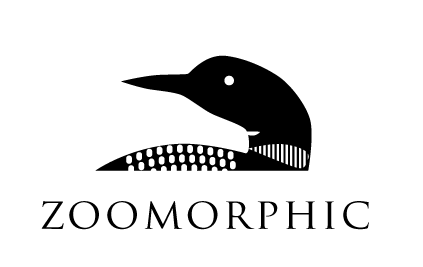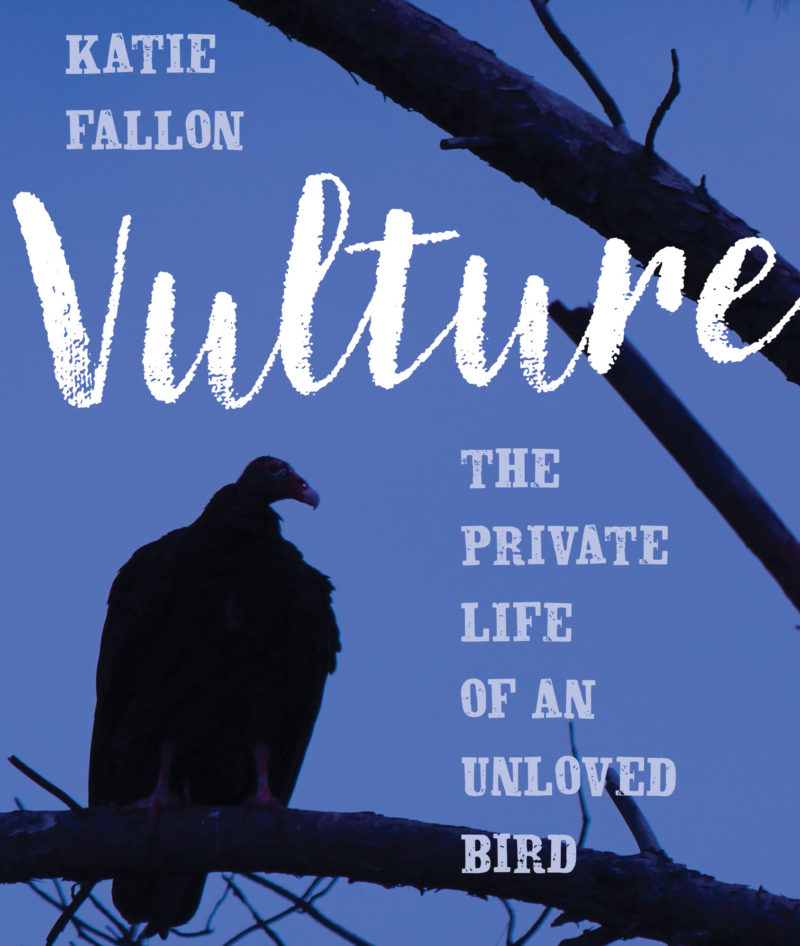by Katie Fallon
I sat cross-legged on the pea-gravel floor of the enclosure, as still as stone, half of a dead mouse resting in my outstretched palm. Lew the turkey vulture stood about three feet away and wuffed at me. He roused, shaking out his feathers, then stretched both wings back; each flight feather of the right wing was glossy, silken, and impeccably preened. The left wing, however, did not extend well, and several feathers in sheath jutted at odd angles, like porcupine quills. The injury— several fractures near the shoulder joint—had already healed by the time we’d admitted the bird to the acca for rehabilitation. We knew he would never fly again. The vulture kept his good eye fixed on me. Like the left wing, the bird’s left eye was damaged and not functional.
I swallowed, just a subtle movement, and Lew wuffed again. A few weeks earlier we’d received a permit from the US Fish and Wildlife Service to keep this vulture for use in environmental education programs, and I was working to train him. Or perhaps he was training me. Our goal was for Lew to become an ambassador for turkey vultures everywhere—to allow folks to admire a vulture up close, to give them a chance to know a turkey vulture a little bit better. We wanted Lew to be a confident, comfortable bird, which might allow audiences to glimpse a turkey vulture’s typical “personality,” and not that of a stressed, panicky creature (which is, unfortunately, sometimes the case with wild, non-releasable birds used in programs). We were only using positive reinforcement and operant conditioning with Lew; it could take some time, but we were confident the result would be worth it.
Recently, bird-training experts have begun to recommend that vultures not wear anklets or jesses, the leather straps around the legs used to leash hawks, falcons, eagles, and owls. Because vultures excrete liquid droppings on their legs and feet, equipment can wear out or become encrusted, which in turn could harm the bird. Also, a vulture’s legs are not as strong as a predatory raptor’s, and a vulture jumping (also known as bating) while jessed could result in injury. In addition to the potential physical problems with jessing vultures, the International Association of Avian Trainers and Educators explains in a position statement that “there is a gradual movement toward giving birds more power over their environment. The scientific community has shown control is a primary reinforcer for animals. When a bird is empowered with control over its environment it will often perform with more reliable behavior.” The position statement further states, “Trainers are now discovering that jesses are often associated with negative reinforcement and positive punishment,” which could result in a bird that engages in “escape avoidance behavior, aggression, apathy, phobia or generalized fear of the environment.”
I certainly didn’t want to punish Lew or cause him to be fearful; I wanted us to be partners. I wanted us to trust each other. Still, I was a bit nervous without jesses. Although I’d given educational programs in the past with un-jessed macaws, cockatoos, and African gray parrots, I’d never worked with an un-jessed hawk, owl, falcon, or vulture. But bird- trainer extraordinaire Erin Katzner and I had worked out a plan for training Lew, and although I remained a bit apprehensive about a truly wild vulture’s ability to trust me—and for me to trust him—in public without jesses or a leash, we were willing to give it a try.
Lew lowered his head and took a step toward me. I sat perfectly still. He took another step, and as he drew closer he lowered his whole body, almost slinking as he approached. When his toenails reached the edge of the blue mat—our target, the place he was supposed to learn to stand on to be fed—the vulture began to stretch his neck in my direction. I held my breath. The bone-white hook at the end of his beak was only a few inches from my fingertips. I smelled the musky warmth of his feathers. His good eye, a deeper brown color than the eyes of other vultures I’ve worked with, rolled in his red head, searching my eyes, my face. He inched his other foot onto the mat, stretched, and deftly nipped the piece of dead mouse from my fingertips. In a flurry, he retreated about three feet away and watched me as he swallowed the morsel. He opened and shut his beak a time or two and kept staring at me, and perhaps relaxed just a bit.
I exhaled. A wild vulture had approached me and eaten from my hand. This was day twelve of our training. The first day, I’d dropped food on the mat, then left the enclosure. After a few days of that, I stood just inside the door. Then I moved a few steps closer, and then I began sitting near the mat, moving a bit closer to it each day until today, when I rested my hand on the mat, food in hand. It took me sitting like a statue for almost twenty minutes, but it worked. Tomorrow, he would be more confident.
A turkey vulture without the ability to fly is tragic. The birds are built to soar, to master the wind. Should we have humanely euthanized this vulture, who now stood just a few feet away from me? That would have been a reasonable decision. Lew’s enclosure is equipped with various pieces of furniture to accommodate his handicap. He could only reach his roosting box (complete with a floor heater for chilly winter nights) by climbing a ramp we’d built with “stairs,” much like a ramp you’d find in a chicken coop. A series of gently sloping logs, branches, and large rocks allowed Lew to run along them without having to use his wings. From the enclosure’s highest perch, he could look out across a field and see the woods beyond. Other vultures often swirled on thermals above the acca. Lew would cock his head and watch them.
Perhaps Lew’s unfortunate fate could save other turkey vultures. Up close, he is an impressive bird: the bronzed-black contour feathers, interlaid like soft scales; the bone-white hook of his beak; the small, black-pupiled brown eye set in his blood-red face; the delicate black velvet on his wrinkled forehead; the deep, close-mouthed hiss. Even the warm, musty smell is surprising. And when the wings unfurl, you wonder, for a moment, how the bird’s been hiding them, how he manages to neatly fold such great capes over his back. The quick turns and bobs of his head show how sensitive he is to his surroundings, and when he fixes his eye on yours, you realize you’re in the presence of something trying to figure you out, of something that’s thinking.
Perhaps I’m overreaching and anthropomorphizing. Perhaps not. Regardless, this broken bird had a very important job—to be a spokesbird for the spokesbirds, to give folks an up-close-and-personal introduction to the most widespread and numerous scavenging raptor on the planet.
I smiled and reached into my pocket for another piece of mouse.
Excerpted from Vulture: The Private Life of an Unloved Bird by Katie Fallon published by ForeEdge, an imprint of University Press of New England. http://www.upne.com/1611689716.html
Katie Fallon is the cofounder of the Avian Conservation Center of Appalachia, a nonprofit research, education, and rehabilitation center for injured birds. A member of the International Association of Avian Trainers and Educators, she has glove-trained a wide variety of raptor species, including turkey vultures, hawks, owls, and falcons. She is the author, previously, of Cerulean Blues: A Personal Search for a Vanishing Songbird. She lives in West Virginia.

